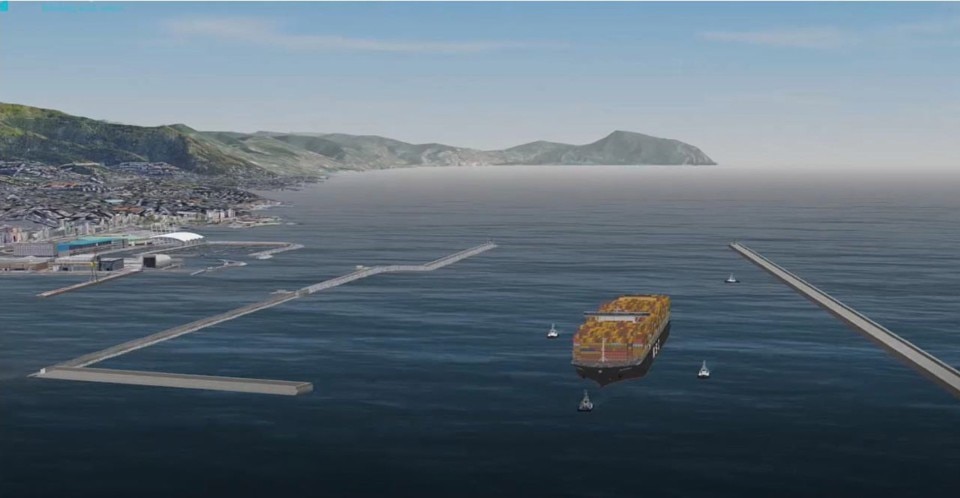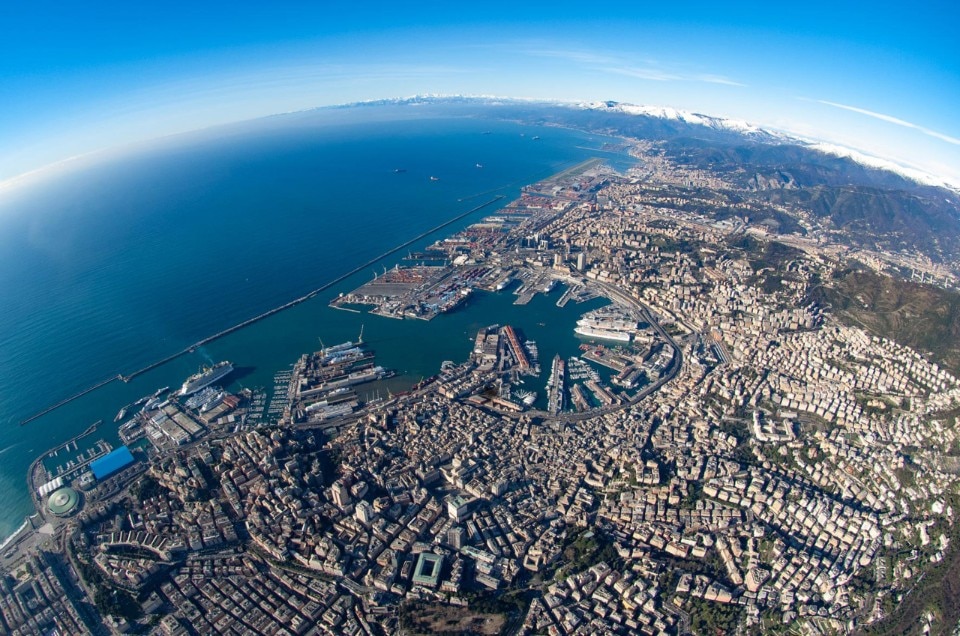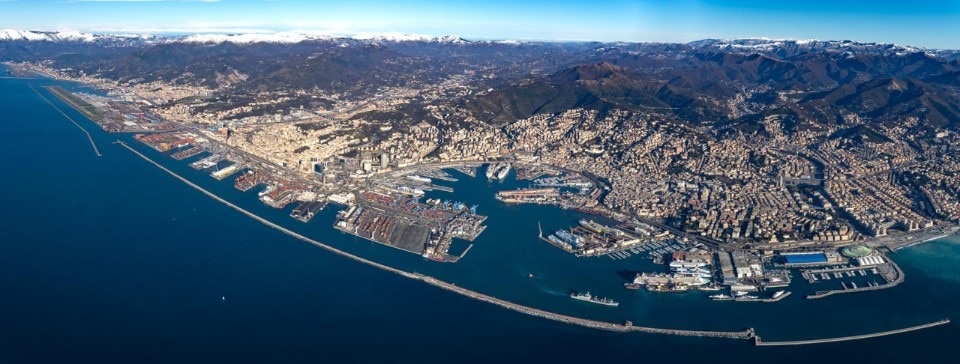The sea in front of Genoa, architect Renzo Piano often says, is inhabited. Ships enter and leave the port, they stop at the roadstead and manoeuvre within the city's thin boundary, the Foranea dike. For over a century, more than the coastline, the dike has marked the true border to the south of the city. Recently the Port Authority chose the project for its enlargement: a necessary development for the port to stay competitive in the system of ports of the new Silk Road, where goods are increasingly transported by mega-cargo ships. The most interesting aspect was not so much the project itself as the method used to reach a synthesis.
On 9 January, after a first round of selection, the Port Authority faced three possible scenarios and, instead of evaluating and deciding locked away in its offices and engineering studios, decided to test a selection method that had no precedent in Italy for a project of this scale: public debate.
Between January and February, the details were published on a website which explained very clearly all the technicalities involved. Then, 67 working groups met in a series of live-streamed discussions - due to Covid, but probably replicable and effective in other contexts too – followed by more than 150,000 people. A French-style public débat, a choice supported first and foremost by the president of the Port Authority, Paolo Emilio Signorini, who preferred a more complex path, subject to unforeseen events, rather than taking advantage of his role as commissioner and of the Italian Simplification Decree, that would have allowed him great autonomy in the decision-making process.

Andrea Pillon, professor of Governance at the University of Turin and member of Avventura Urbana, one of the first consultancy firms in Italy to experiment with negotiation tools for public infrastructure projects, was called in to coordinate and manage the debate. Preventing conflicts between organisations – from environmentalists to local urban groups, social partners and port services unions – is a method that on the one hand seems to slow down the design stage, but on the other can speed up and simplify the construction phase.
There was never any doubt about the need to build a new dike for the port of Genoa. For years, manoeuvring difficulties have been evident and the reorganisation of the port’s waterfront has been a priority, especially after the collapse of the pilots’ tower in 2013, when it was hit by a container ship during a manoeuvre between the quays.
Of the three proposals that reached the final stage of the public debate, two were very similar, while the third envisaged a radical transformation with the entry of cargo traffic from the west rather than from the east, as is the case today.
However, one of the most in-depth topics under discussions was cost-benefit analysis, with two projects quantified at €1 billion and the third at €1.6 billion. There is an anecdote that recounts that the dike of Genoa had already come under similar scrutiny 120 years ago. At the time, it seems, banker Luigi Raffaele De Ferrari asked the government to carry out the work because it was strategic for the city’s port. But the government declined, and the banker turned to his wife, the Duchess of Galliera (Maria Brignole Sale De Ferrari), to obtain a cheque with which to start construction. “The people of Genoa”, said the city's mayor Marco Bucci, “paid for their own dike, thanks to a strategic vision that has lasted at least 120 years”.
The strategic vision shifted the focus of the debate from the numbers to the benefits, such as the opportunities for market development and environmental sustainability.
The new dike is not the port: it is the city, growing and pushing its boundaries a little further
Genoa’s new dike is not only a concrete strip that will double the size of the port’s entrance canal – from the current 200 metres to 400 metres – but will also create a new 800-metre-diameter outpost for ship manoeuvres. According to Mayor Bucci “the new dike will not be inert: in addition to blocking the waves and protecting ships, it will also bring economic benefits to the city. I’m talking about energy, I’m talking about the possibility of having very low wind turbines that do not spoil the landscape and the environment, and I’m talking about the movement of the waves that could create energy for the dike and the port”. The mayor has already discussed this with architect Renzo Piano, who ten years ago launched the idea of a series of wind turbines to create energy from the dike.
“The new dike is not the port,” clarified Paolo Emilio Signorini, “it is the city, growing and pushing its boundaries a little further.”
Now that the project (Alternative 3) has been chosen, the path is clear: construction is due to start in 2022 and will be completed in 2026, without interfering with routine port traffic. The city has already experienced this kind of simultaneous, “parallel” construction site with the other major work, the San Giorgio Bridge. But the enlargement of the port is only the starting point. Once they've arrived in Genoa, goods will have to continue northwards and travel along the European corridors. This is where the real challenge lies: no one wants to send them by road any more, but with an upgraded, fast, modern rail network. Ship plus train: will this be the development vision, the “Genoa model”, for the next 120 years?






